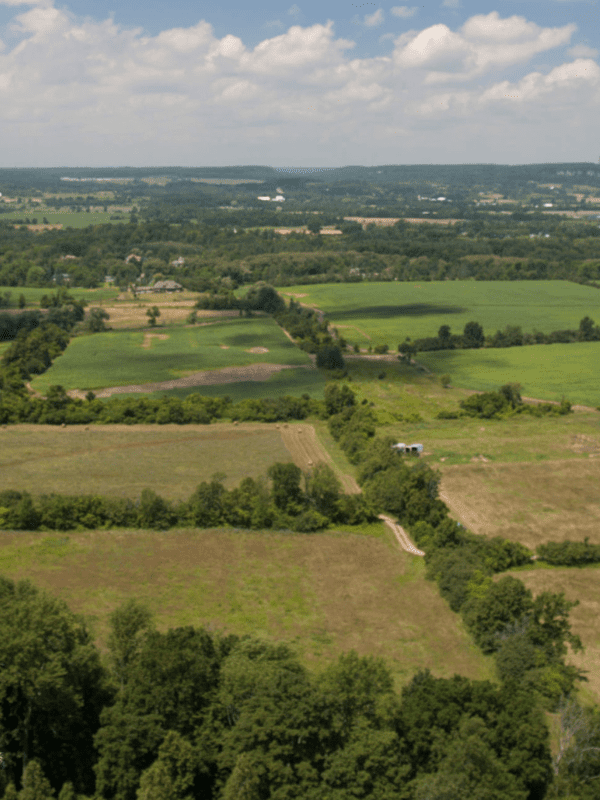Statement by Phil Pothen, Land Use and Land Development Program Manager
Toronto | Traditional territories of the Mississaugas of the Credit, the Anishinaabeg, the Haudenosaunee, and the Wendat – Despite its name, the Ontario government’s “Get It Done Act” would actually make it harder to fix Ontario’s housing shortage, while failing to tackle the tolls on the 407 that really do stand in the way of a faster, cheaper fix to traffic problems.
Kneecapping Efforts to Fix the Housing Shortage
The most troubling and significant feature of the bill is the re-imposition of many of the corrupt urban boundary expansions that are at the heart of the sprawl and land speculation scandal. These expansions were rejected by regional governments, like Halton Region and Waterloo Region, because they already had a large supply of rural land designated for development sitting unused. Before 2022, the GTHA alone already had more than 350 km2 of designated development land that had been sitting unbuilt for many years.
Altering official plans to consume even more land over the next 30 years would make development much less labour and materials efficient, making it harder –not easier– to speed up home construction and drive down housing costs. While the government defends these back-door expansions as “municipally-requested”, the “requests” referred to come from the same lower-tier Mayors who were originally outvoted at regional councils like Halton’s.
The “Get It Done Act” repackages the same corrupt decisions at the heart of last year’s corruption scandals. It would let rural sprawl developers steal the construction that’s needed for efficient lower-cost housing in regional centres, simply because they’ve managed to lure the Mayor of some smaller nearby town into acting as a human fig-leaf.
Allowing Expropriations for Mega-Highways Before Impact Assessment
While on the surface it might look like a minor tweak to definitions, the proposed amendment to the Environmental Assessment Act is a major red flag. They suggest the government is gearing up to take advantage of a temporary gap in the federal impact assessment of Highway 413 that could occur if there are delays in introducing an amended federal Impact Assessment Act.
This language appears to be designed to hinder court challenges that would prevent Ontario from expropriating land and destroying endangered species habitats quickly enough to take advantage of such a gap.
Silver Linings: Victory in Hamilton and Empty Gestures on Carbon Pricing
The closest thing to good news regarding the “Get It Done Act” is what the proposed law does not do.
While the proposed law would reinstate –and in some cases worsen– forced boundary expansions in some regions with dual-tier governments, it appears to leave intact the fixed urban boundary and aggressive focus on infill housing which are the centerpiece of the City of Hamilton’s groundbreaking Official Plan.
The government’s “Protecting Against Carbon Taxes Act, 2024”, which is part of this bill, also accomplishes nothing except a headline. It will have no impact on carbon pricing in Ontario now or in the future. Elected officials need to stop mischaracterizing and fighting about carbon pricing and work to reduce emissions. We will surely be reminded again this summer that the climate crisis is acute.
The Only Path Forward
From the business pages of the Toronto Star, to analysis by transportation experts and experts of the Ontario government’s own hand-picked Housing Task Force, there is now a single clear path to actually “getting it done” when it comes to traffic congestion and the housing crisis. Ontario must channel almost all of its construction and infrastructure investment into supporting denser, lower-cost housing types in existing built up areas that need extra density to end car-dependency and make transit cost-effective. Only then will municipalities be able to solve the traffic problem and increase the housing supply fast enough to keep up with demand. Ontario cannot afford to waste construction on the highway mega-projects and labour-wasting McMansion sprawl that will be caused by the “Get It Done Act”.
ABOUT ENVIRONMENTAL DEFENCE (environmentaldefence.ca): Environmental Defence is a leading Canadian environmental advocacy organization that works with government, industry and individuals to defend clean water, a safe climate and healthy communities.
– 30 –
For more information or to request an interview, please contact:
Carolyn Townend, Environmental Defence, media@environmentaldefence.ca






